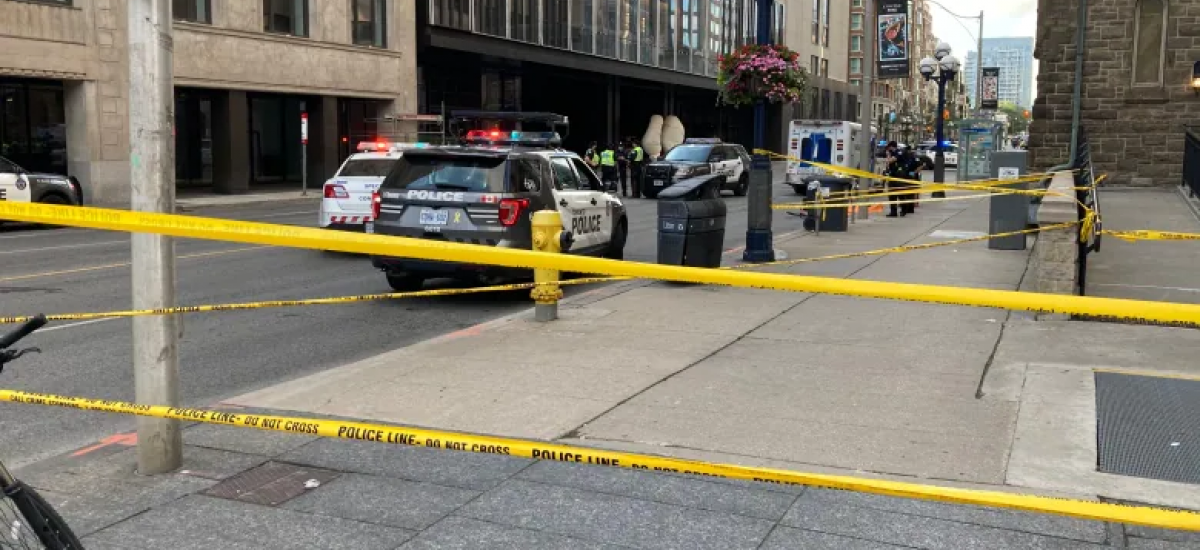Tragedy on Avenue Road not an Anomaly

Avenue Road just north of Bloor Street. Photo courtesy of Michael Aitkens/CBC
Last Wednesday, Miguel Joshua Escanan’s young life was taken while riding his bike on Avenue Road, metres beyond the end of ActiveTO bike lanes (and where a speedway begins). Avenue is not an anomaly; it is one of many six-lane highways cutting through Toronto that the City itself has identified as needing safety improvements.
Our elected leaders need to lead by acting on evidence we already have, not waiting until tragedy tears apart another family before thinking about safety. Waiting to redesign dangerous roads and regulate unsafe vehicles costs the lives of children, friends, partners, and parents. This is unacceptable.
Email the Mayor RE: Safe Infrastructure
&
Email the Premier RE: Safe Vehicles
We know what works
Designing roads with the safety of all road users in mind is the quickest way to reduce road injuries and death.

Protected bike lanes provide dedicated space for people cycling. Streets with protected bike lanes have been shown time and again — in Toronto — to be safer for people cycling, walking, and driving.
Toronto’s major roadways are streets where people live, work, learn, shop, and travel. People take transit, walk, and cycle on dangerous streets, like Avenue, in every corner of the city. We must transform these dangerous highways that divide our neighbourhoods into safe and comfortable main streets that connect our communities.
Protected bikeways are needed on Toronto’s major roads. It’s up to City Council to act quickly and prevent more suffering by approving redesigns of our roads and funding rapid change.
Email the Mayor and Infrastructure Committee
Keep unsafe vehicles off the road.
The Avenue Road truck was so unsafe that “other drivers and pedestrians needed to alert the truck driver about the collision.” These trucks are dangerous by design: from 2006 to 2020, more than 174 pedestrians and cyclists have been seriously injured or killed by unsafe trucks on Toronto’s streets.

Around the world, increased vehicle safety standards exist for cities, but are not used in Toronto. These standards include high-visibility truck cabs, side-guards, proximity sensors, and blind-spot cameras.

High-visibility truck cabs (top) are much safer. Image source
Let the Premier know far too many people have died on Ontario’s streets due to these dangerous trucks, and his government must act now to implement these simple, life-saving measures.
Email the Premier & Minister of Transportation
ARC Ghost Bike Ride
Advocacy for Respect for Cyclists (ARC) is organizing a memorial ride for Miguel Joshua Escanan, tomorrow, Wednesday.
Date: Wednesday, August 25
Time: 5:45PM
Duration: 1 hour, 15 minutes
Location: Matt Cohen Park (Spadina & Bloor)
Big Toronto Bike Ride presented by Bike Law
Cycle Toronto works every day to improve cycling in Toronto. Advocating for better cycling infrastructure and regulations is one of the many reasons we ride. If you want to support Cycle Toronto's work toward safer streets, please consider joining our annual fundraising ride, the Big Toronto Bike Ride presented by Bike Law, September 18 & 19.
Sample email to Mayor
|
|
|
|
|
|
|
|
|
|
|
|
Sample email to Premier
|
|
|
|
|
|
|
|
|
|
|
|
